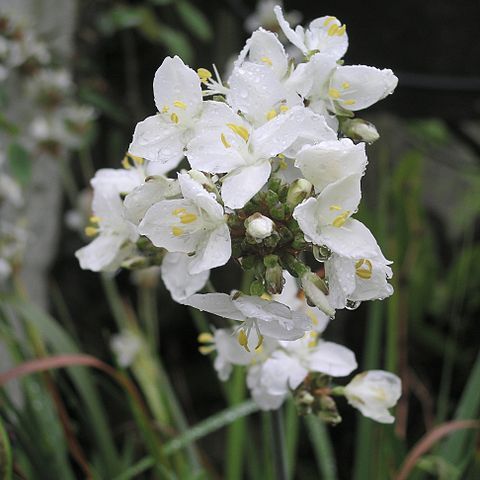Panicles laxly branched or with dense clusters of fls, sts very simple; sterile spathes foliaceous, floral bracts membr. Fls us. white. Per. spreading; tepals free, the outer 3 us. < inner 3. Staminal filaments free or shortly connate at base, ± flattened; anthers versatile. Ovary 3-locular; style short with 3 ± keeled entire branches that spread between stamens. Fr. a subglobose to oblong or pyriform capsule. Seeds ∞, rounded to angular, ± foveolate. Tufted, shortly rhizomatous or stoloniferous herbs of grass-like habit, wholly or almost completely glab. Lvs us. in flattened fans. Perhaps a dozen spp. of S. America, Australia, New Guinea, and N.Z. N.Z. spp. endemic except L. pulchella.
Herbs, perennial, from creeping rhizomes. Stems branched or rarely simple. Leaves mostly basal; blade flat, ensiform. Inflorescences rhipidiate; spathes green. Flowers lasting one day, actinomorphic; tepals spreading, distinct, white [blue], unequal, outer whorl smaller than inner; filaments shortly connate basally; anthers not appressed to style branches; style dividing into 3 filiform branches, extending between stamens below anthers. Capsules ± ovoid, cartilaginous to woody. Seeds many, angular; seed coat light to dark brown. x = 19.

